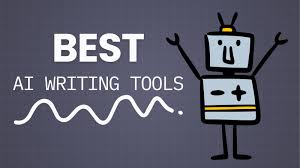No longer are dusty old books filled with ink and quills. Even the typing of typewriter keys by a writer in candle-lit vigils is a thing of the past. Modern efficiency is all about digital, slick technology. AI writing tools software is a technological advancement that has created a stir in the world of content creation.

Imagine baking a chocolate cake. Except you don’t even need to mix ingredients. Your kitchen knows exactly what you need and creates a delicious chocolate ganache. In a way, this is how AI-based writing tools work, except they don’t serve confections but well-structured texts. They convert directives into comprehensive text. This often leaves the user bewildered, but also delighted by the computational eloquence.
It’s not always easy to sail in the digital sea of text. The user has to be a literary helmsman, steering AIs away from the icebergs created by bland repetitions and the whirlpools produced by grammatical gaffes. The power of these tools comes from their programming algorithms – secret sauces which determine their ability of mimicking human-esque levels creativity and engagement.
If you look deeper, you’ll see that these tools aren’t simply about spitting out words after having absorbed an entire internet worth of dictionaries. The tools involve an intricate dance that involves algorithms and plays with metaphors, sentence structures and humor. “Why was the AI a failure at school?” The AI couldn’t complete the TensorFlow assignment!
AI writing aids have a wide range of applications. Bloggers use it to quickly create posts that would normally take hours. Students polish their essays with them (hopefully for just editing advice). Moreover, they are used by marketers to produce content that is as heartfelt as a handshake.
AI tools provide flexibility, unlike older writing programs that were rigid. Consider them the yoga instructors of tech writing. Need a concise, professional email message? Done. How about a poetic description? Watch the AI wax lyrical. They can engage users with a variety voices, from scholarly to casually breezy.
It is essential to view these tools only as an aid. AI can produce a Frankentext that is a monstrous patchwork. Wise people know that the last touch, or the soul, of the content is best left to humans. Since no AI can replicate the spark of personal experience or the nuanced understanding a grandfather’s anecdote.
Some critics claim that AI will lead to a lazy writing trend. Why try to create the perfect analogy when an algorithm can do it for you? Herein lies the delicate balance: Use AI to take control but keep your hands on to guide it when needed. The truth is that every chef knows the mixer can be invaluable but the real magic happens when you adjust the flavors yourself.
A journey into the world of AI generated content can be exciting. This is a cerebral journey that starts off with a prompt, and ends in unimaginable places. It’s possible that the journey will take a frustrating twist at times. For example, if you are dealing with a computer program that adds bizarre twists to seemingly straightforward instructions. But this is all part of the fun, that unpredictable spin which often brings a smile or a raised eye.
Without concluding the discussion, I would like to say that thinking of AI tools as automated typing machines is a misrepresentation. Assistants that can be used as a springboard to take your creativity into new territory, they are more similar to partners. As with any tool – from paintbrushes to pencils – their true worth is revealed by the hands that use them. Hold your digital pen and let your keyboard be guided by the muse that is modernity.